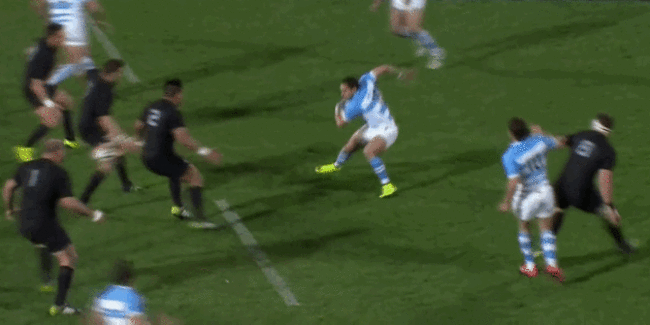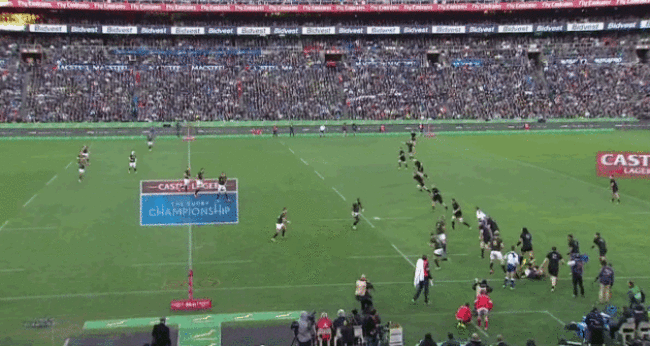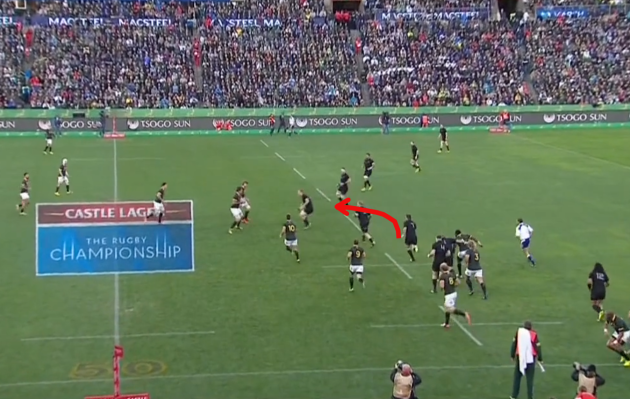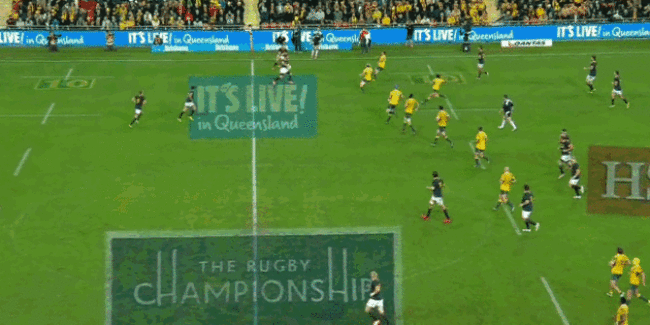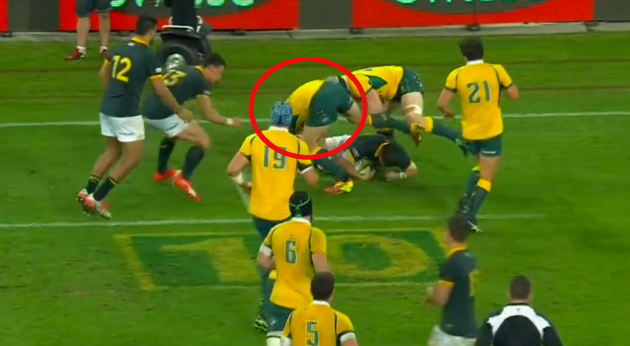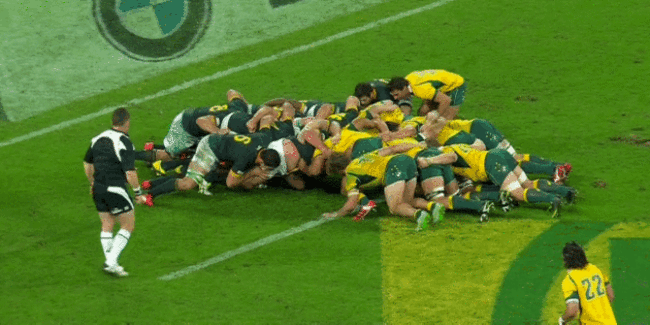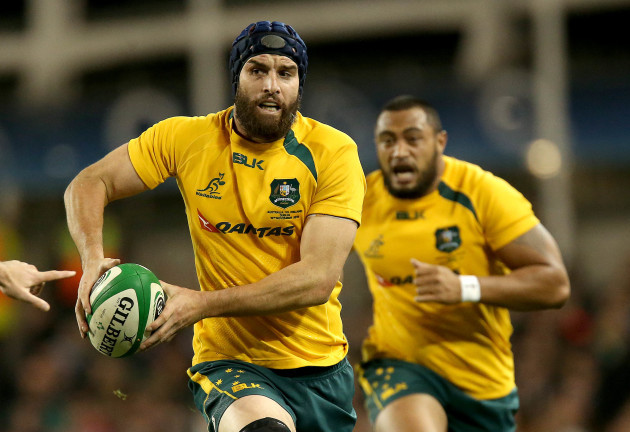A BRILLIANT DAY of rugby awaits tomorrow as Ireland face Wales in a World Cup warm-up fixture and the Rugby Championship comes to a conclusion in the Southern Hemisphere.
All eyes will be on Joe Schmidt’s team in Cardiff, but the clash between New Zealand and Australia in Sydney perhaps has even more relevance to the looming World Cup, particularly given the strength of both starting XVs.
Aside from being a build-up to the global tournament, the meeting between the Kiwis and the Wallabies is of course a Rugby Championship decider. The breakdown and rucks have a major bearing on the outcome of every game in rugby, but the battle in that department tomorrow promises to be on another level.
In Richie McCaw and David Pocock, this encounter features two of the greatest breakdown specialists in the world. The likes of Michael Hooper, Scott Fardy and a host of other players aren’t too far behind.
A fascinating battle for supremacy on the ground lies ahead.
Clever McCaw
At the age of 34, the last year has seen McCaw face some mutterings that his quality is on the wane. While he may have to manage his body more than he did in the past, there is little doubt as to the ongoing ingenuity of McCaw’s rugby brain.
Similarly to several of his New Zealand teammates, McCaw’s form has been on a steady upward trajectory in recent months. A relatively quiet Super Rugby campaign has led into a growth on his return to the international scene.
As always, the black jersey is bringing out the best in McCaw and his teammates.
The openside flanker is constantly alive to the possibility of stealing possession, as we see above. His only instinct is to hunt for the ball, so evident in his body language here after New Zealand have blocked down an Argentina kick.
McCaw chases from inside the ball to what he has swiftly perceived as being the point of breakdown, seems to briefly think about supporting Tony Woodcock as the main jackal, before realising that his position is more ideal for getting hands on the pill.
The key with McCaw is that he is selective about when he goes in for the ball. Most good opensides are, but the Kiwi captain rarely makes a poor decision about when to commit.
We get a sense of that above, as he hovers in behind the tackle briefly, thinking about competing for the ball.
However, identifying Lood de Jager and Francois Louw in strong rucking positions, McCaw instantly moves on to add a defensive body to the right side of the ruck.
This hovering in behind the point of contact is where McCaw really lives from ruck to ruck. It’s fascinating to keep a close eye on him as New Zealand defend, with McCaw looping around to come in from behind the breakdown.
Even when the Kiwi tackle is behind the advantage line, McCaw so often predicts where the breakdown will be and ends up in a good position to contest. Keeping your own ‘player cam’ on the veteran flanker is a worthwhile exercise.
Poacher Pocock
While McCaw’s form may have been slowly building, Pocock has been spectacularly good throughout 2015, scoring hat-tricks, terrorising Super Rugby breakdowns and earning his Wallabies’ return after two seasons of cruel injury issues.
His impact in the first two rounds of the Rugby Championship has been similarly impressive, with a 35-minute cameo off the bench against South Africa backed up by an excellent outing against Argentina.
Pocock is a turnover specialist, the superb effort above being typical of his skill in this area. Willie le Roux looks to counter after receiving a Wallaby kick, but runs into trouble as he attempts to skirt past Pocock.
One of the most impressive things here is that the Australian doesn’t go to ground after stretching out to assist in the tackle on le Roux. He has the strength and control of his body to stay on his feet, swinging around into a perfect poaching position.
From there, his attack of the ball is extremely clean. We’ll see many players in these circumstances blatantly keep their feet by placing their hands on the ground, but Pocock is cleaner in his jackaling, getting immediately onto the ball and actually looking to rip it clear, rather than simply resting over it.
A key aspect of this turnover penalty is the assisting work of Rob Horne.
The Wallaby wing is involved in the tackle on le Roux, but it’s his post-tackle action that is essential in providing Pocock with time to jackal. As we see above, Horne has worked himself into a position beyond the ball, beating the South Africa rucking player to that space.
It means that Horne, rather than Pocock, is the only target for Jesse Kriel as he arrives in hoping to rescue the situation. It’s subtle from Horne of course, but this is something the Wallabies have worked on.
The underlying point is that Pocock, McCaw and other breakdown specialists are often only as good as their teammates allow them to be. In this congested area of the game, it’s so frequently the assisting defensive player who makes the difference.
Still, Pocock is among the best in the world at taking advantage of these situations. His turnover rate is astonishing and as the Wallabies look to echo South Africa’s tactics against New Zealand – stifling their attacking play at the breakdown – he will be vital.
Hard-hitting Hooper
Pocock’s ability at the breakdown, as well as his prowess in other areas, has been impossible to ignore and Michael Cheika has decided to start both himself and Hooper for this final Rugby Championship.
This combination has seen game time in the games against Argentina and South Africa, but it’s even more fascinating to see this pair in tandem from the off against the best team in the world.
While we don’t need to tell you that Hooper is capable of stealing the ball at the breakdown, his ability here is not consistently in the same league as Pocock and McCaw.
Yes, he produces key turnovers on the deck at important times of games, but the other two opensides are far more constant in their threat to opposition ball, whether that’s stealing possession or regularly slowing it down and making it scrappy.
Pocock has considerably more steals than Hooper over the last two games and posted far greater numbers of turnovers in Super Rugby this year too. They’re not exactly the same type of openside in truth, with Hooper being more of a ‘power player’ than Pocock.
Hooper, who wears the seven shirt tomorrow as Pocock lines out in the number eight jersey, has been producing huge hits like the one above on a frequent basis this season, while his ball-carrying has been equally as explosive.
He will certainly be sniffing around for turnover chances as he digs in alongside Pocock at the coalface in Sydney, but the expectation is that his most game-changing moments will again be in the ball-carrying and hard-hitting stakes.
Fardy and Barnes
New Zealand let themselves down at ruck time when they had possession last time out against South Africa. At times, the frightening pace they brought to the game seemed too much even for their own rucking players, as Springbok defenders won the race to the ball and came up with frequent turnovers.
It’s been a key focus for the Kiwis in the build-up to this fixture, particularly with Pocock and Hooper around to punish any repeated sloppiness.
That pair are not the only ones capable of doing major damage, however. Blindside flanker Scott Fardy is another breakdown expert, perhaps even more so than Hooper, and he will look to get his hands all over the Kiwis’ attacking ball.
Another interesting player in this game will be referee Wayne Barnes, who tends to be particularly strict around the breakdown.
Will he allow only limited competition on attacking ball? Will he tolerate players not instantly rolling away from the tackle? What will his demands in terms of the jackal controlling their own body weight be? How will both teams react?
In-match analysis points
It would be fascinating if those tuning into tomorrow’s game could track this area of the game and report back here on what they notice.
In that vein, here are a number of things to keep track of:
- McCaw and Pocock’s movement in positioning themselves for turnover chances
- How they control their bodyweight or bounce off the ground post-tackle
- The moments when these players opt not to attack the ball on the ground
- How important are the assisting actions on any turnovers?
- Who are the key breakdown players aside from Pocock and McCaw?
- Hooper’s big plays and whether he is a consistent force in the rucks
- The particular demands on Barnes and what he’s more lenient with
Let us know what you pick out in what should be another absorbing contest.

